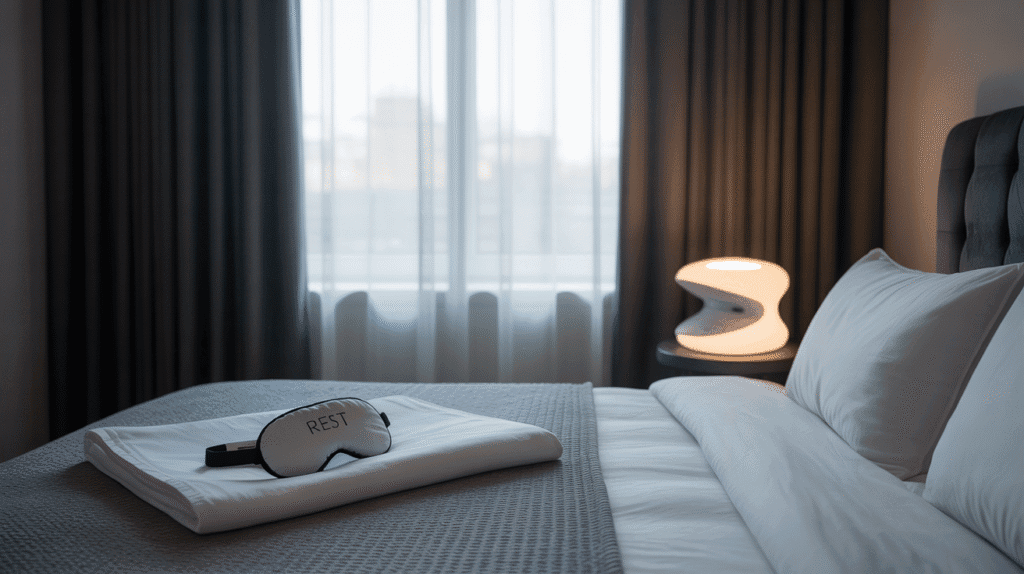
Most habit advice is built for people with 9-to-5 lives. Wake up early, meditate at sunrise, work out before breakfast. But what if your “morning” starts at 7PM and your “dinner” is at 3AM?
If you work night shifts—whether in healthcare, security, hospitality, logistics, or remote support—you know that traditional routines don’t fit your life. And trying to force them often leads to frustration, burnout, or giving up entirely.
But here’s the truth: consistency is still possible—it just has to look different.
You don’t need to copy the routines of early risers. You need strategies that align with your actual rhythm. Habits built around your energy, your reality, and your needs—not society’s clock.
This article will show you how to build habits that flex with your schedule—so you can feel grounded, focused, and in control, no matter when your day begins.
Working night shifts puts your body at odds with its natural circadian rhythm—your internal clock that’s wired for activity during daylight and rest at night. This mismatch can affect everything from sleep quality to digestion, focus, and mood.
But here’s the important part: your biology isn’t broken—it just needs support.
Instead of trying to fight your circadian rhythm, you can adjust your lifestyle to work with it. That starts by shifting your mindset. You don’t have to follow a “normal” schedule to be healthy or productive. You just need a consistent one that honors your unique rhythm.
Some key adjustments include:
When you accept your shift as your reality—not a temporary glitch—you can begin designing habits that fit instead of habits that frustrate.
Your circadian rhythm isn’t your enemy. It’s your compass—once you learn how to read it.

Most advice about habits starts with a “morning routine”—but what if your morning happens at 7PM? If you work night shifts, trying to copy early risers will only set you up for stress and disappointment.
The good news is: you don’t need to follow the sun—you need to follow your shift.
Think of your day not in terms of time, but in terms of phases. No matter when your shift starts, your body and mind still move through similar cycles: activation, performance, and recovery.
Here’s how to build around that:
Your “morning” might begin at 6PM and your “night routine” might happen at 9AM. That doesn’t make your rhythm less valid. It makes it yours.
A consistent routine isn’t about time of day—it’s about creating stability in how you start and end your active cycle.
If your work schedule shifts—or if you sleep during the day—traditional advice like “meditate at 6AM” just doesn’t work. That’s why one of the most powerful habit strategies for night shift workers is to anchor habits to events, not hours.
Instead of relying on the clock, tie your habits to consistent actions that happen in your routine, no matter the time.
Here are some real-life examples:
These anchors are fluid but reliable. They move with your rhythm, not against it—and that’s exactly what builds consistency without rigidity.
This method also works during schedule transitions. Whether you’re on nights, swing shifts, or rotating weekends, the action (like “after my shower”) is far more dependable than “at 7PM.”
By tying your habits to daily activities—not arbitrary times—you create structure that stays with you, wherever your schedule goes.

When you work at night, your energy isn’t just drained differently—it’s drained deeply. That’s why the most important habits for night shift consistency aren’t always about productivity—they’re about recovery.
You can’t build sustainable routines if your body and mind are running on empty. So instead of asking “What should I add to my day?”, ask: “What do I need to restore?”
Here’s where to start:
You might be sleeping when the world is awake, but that doesn’t make your rest less vital. Use blackout curtains, white noise, and a wind-down routine to signal your body it’s time to let go—even if it’s 10AM. Let others know your sleep hours. Set boundaries with intention, not guilt.
Night shifts can destroy normal eating patterns, which affects mood and metabolism. Try to eat before your shift, lightly during, and after winding down. Stay hydrated. Prep snacks in advance to avoid vending machine traps.
When your world feels upside-down, a few minutes of stillness can ground you. Try 5 minutes of meditation, gentle music, or simply sitting without stimulation. Especially before sleep or after waking, this gives your brain a signal of safety.
These aren’t luxury habits—they’re foundations. Without them, no productivity hack will hold. With them, your entire routine becomes stronger, calmer, and more sustainable.
You don’t need to hustle more—you need to recover better.
Working night shifts doesn’t mean you’re excluded from structure, discipline, or personal growth. It simply means you need to create systems that respect your rhythm—not fight against it.
Forget the early-bird advice and the 5AM routines. Your consistency doesn’t have to look like anyone else’s. It just needs to be yours—built around when you wake, when you work, and when you need to rest.
By understanding your circadian reality, redefining routines to match your schedule, anchoring habits to actions instead of hours, and prioritizing recovery as the foundation—you create a lifestyle that supports consistency on your terms.
Because real discipline isn’t about doing what works for everyone—it’s about building what works for you, and then showing up for it with care and respect.
Even if your days start at midnight, your habits can still lead to powerful, meaningful change.